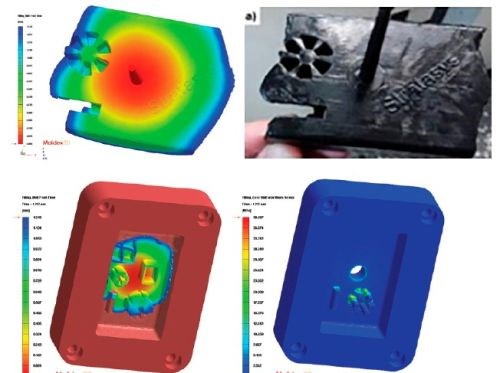Simulate to Validate Molding, and 3D Printed Molds
This throwback focuses on one mold builder's strategy for bridging the gap between concept and production using simulation, but then fast-forwards to a new white paper on using simulation to validate 3D printed injection molds.

Westminster Tool shared its strategy for bridging the gap between concept and production back in 2014. It uses Moldex 3D® software for design for manufacturability (DFM) by simulating the molding process to analyze shrink, cooling and warpage, as well as evaluate gating options. During this stage Westminster can offer alternatives to part design that have the potential to reduce and optimize cycle time, ensuring a robust mold and improved productivity. Read more here. Fast-forward to today and now simulation software is being used in 3D printing.
CoreTech System (Moldex3D) and Stratasys have collaborated on a new white paper that discusses the opportunities and challenges of producing injection mold prototypes with 3D printing and how to use injection molding simulation software to accurately predict mold performance, validate design decisions and take corrective actions to avoid costly mistakes that might occur in final production.
One insight from the paper is how simulation software provides high-fidelity simulation results of flow-front animation, mold temperature variation and distribution, and stress concentration of 3D printed injection molds. Based on the original simulation results, users can redesign and optimize the product process condition, materials (if allowed), and modify the mold and part design to use 3D printed injection molds to produce prototype parts effectively. For example, the gate number and location(s) can be revised to reduce the stress applied to the towers.
Download the full white paper by clicking here.














.jpg;maxWidth=300;quality=90)

